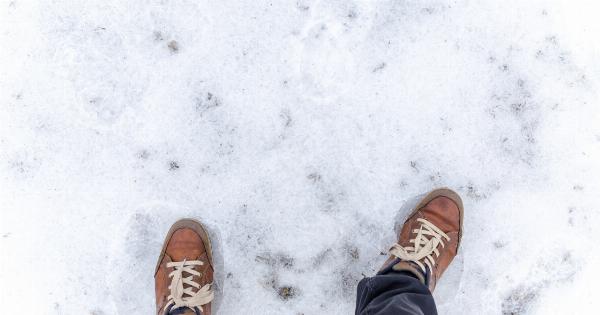Frozen legs are a condition that often arise due to prolonged exposure to cold temperatures. The term “frozen legs” is commonly used to describe a type of frostbite that affects the legs.
This condition can be extremely painful and can cause long-term health consequences if not treated promptly and correctly.
Signs and Symptoms of Frozen Legs
The signs and symptoms of frozen legs can vary depending on the severity of the condition. Here are few common symptoms:.
1. Skin Discoloration
The skin of the affected area may turn pale or grayish-yellow in color. If the condition becomes more severe, the skin may turn a bluish color.
2. Numbness and Tingling Sensations
You may experience numbness or tingling sensations in your legs. This can be followed by a burning or prickling sensation as the affected area slowly thaws.
3. Pain
As the condition progresses, you might feel sharp pains or an intense burning sensation. The sensation could be so severe that even the slightest touch or movement can cause severe pain.
4. Blisters and Peeling Skin
You may develop blisters on your skin as it thaws. This is because the ice crystals that form in the skin cells during the freezing process can cause damage to the skin’s tissues. As the affected area heals, the skin may start to peel off.
Prevention of Frozen Legs
Preventing frozen legs is easier than treating it. Here are a few tips to help prevent frozen legs:.
1. Dress in Layers
Wear lightweight, layered clothing that insulates your body heat properly. This allows you to remove layers if you begin to feel too warm or to add them if you are feeling too cold.
2. Cover Exposed Skin
Wear hats, gloves, and face masks to protect all exposed skin from the cold weather.
3. Avoid Overexertion
Avoid overexertion during cold weather conditions, as this can increase your risk of developing frozen legs.
4. Stay Hydrated
Drink plenty of water to replace the fluids lost through sweating, which can occur even in cold weather.
5. Keep Moving
Keep your blood flowing by moving about regularly, as this helps to keep your body warm.
Treatment for Frozen Legs
If you suspect that you have frozen legs, it is essential to seek prompt medical attention. Here are the steps to take:.
1. Get to A Warm Area
Move to a warm area immediately if it is safe to do so. If you cannot do this, add layers of clothing and wrap yourself in blankets to help trap your body heat and keep yourself warm.
2. Remove Wet Clothing
Removing any wet clothing is essential as this can worsen the condition.
3. Immerse Affected Area in Warm Water
Immerse the affected area in warm water (not hot) with a temperature of about 40 to 41 degrees Celsius. Avoid using hot water, heating pads, or stoves to warm the affected area, as it can make the condition worse.
If you do not have access to warm water, use body heat from another person.
4. Seek Medical Attention
It’s essential to visit a hospital or doctor as soon as possible after treating your frozen legs on your own.
Your doctor can provide specific treatment, including pain relievers and antibiotics as well as recommend other therapies to accelerate the healing process.
Conclusion
Frozen leg treatment and prevention are crucial to minimize the damage from the condition.
Follow the tips mentioned above to prevent frozen legs from occurring in the first place, and if you do experience symptoms, seek medical attention as quickly as possible. Proper care can help prevent long-term health consequences and even amputation in severe cases.




























